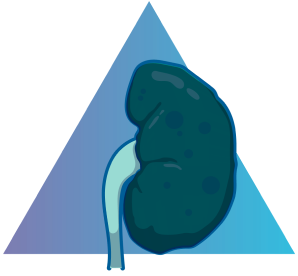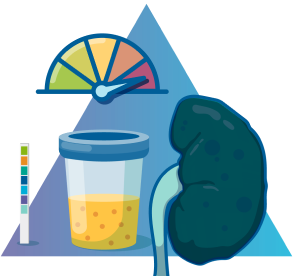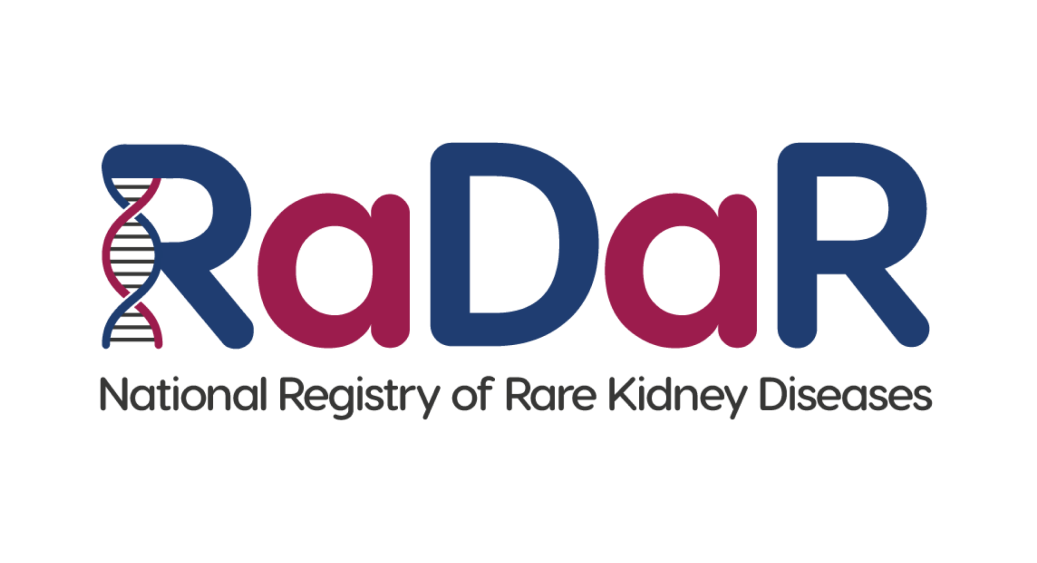
Long-Term Outcomes in IgA Nephropathy
Topics: Nephrology IgAN RaDaR Observational RWE PLS Publication Video
Pitcher D, Braddon F, Hendry B et al.
10.2215/CJN.0000000000000135
See video transcript
Primary IgA nephropathy is the most common type of glomerulonephritis and a major cause of chronic kidney disease and kidney failure worldwide. Current understanding of the risk of progression has been based on data from short-term trials, highlighting the need for surrogate endpoints that can predict long-term outcomes. Regulatory authorities have accepted reduction in proteinuria as an appropriate surrogate endpoint for IgA nephropathy trials, but questions still remain.
To better understand long-term IgA nephropathy outcomes in patients traditionally considered low risk for kidney failure, data from the UK National Registry of Rare Kidney Diseases, RaDaR, were retrospectively analyzed. Patient eligibility included biopsy-proven primary IgA nephropathy and proteinuria above 0.5 g/day or estimated glomerular filtration rate – eGFR – below 60 mL/min/1.73 m2. In total, 2,439 patients were analyzed.
Outcomes in this large cohort of patients were generally poor. The median follow-up was 5.9 years, during which 50% of patients reached kidney failure or died. Findings demonstrated a significant association between persistent proteinuria and rapid loss of eGFR and worse kidney survival. Higher time-averaged levels of proteinuria were significantly associated with more rapid progression to kidney failure or death. Across all proteinuria levels, patients with IgA nephropathy, including those traditionally considered “low risk”, were at risk of developing kidney failure within 10 years. Analyses also showed that patients with a more rapid eGFR loss had a lower 5-year kidney survival rate.
The poor outcomes observed in the RaDaR registry highlighted the need to re-evaluate the current approach to patient care in IgA nephropathy, particularly the need to target a lower threshold of proteinuria, consider combination therapies, and implement a lower threshold for biopsy.
Summary
Background
- Primary IgA nephropathy is the most common form of glomerulonephritis and a major cause of chronic kidney disease (CKD) and kidney failure worldwide1,2
- Current understanding of the risk of progression has been based on data from short-term trials, highlighting the need for surrogate clinical trial endpoints that can predict long-term outcomes
Regulatory authorities have accepted reduction in proteinuria as an appropriate surrogate endpoint for IgA nephropathy trials but questions still remain3
- To what extent can short-term changes in proteinuria and estimated glomerular filtration rate (eGFR) data predict IgA nephropathy outcomes?
- What degree of proteinuria reduction would result in a slower eGFR decline?
Aim
To better understand long-term IgA nephropathy outcomes in patients traditionally considered “low risk” (<1 g/day) for kidney failure, data from the UK National Registry of Rare Kidney Diseases (RaDaR) were retrospectively analyzed
Key findings

Outcomes in this large cohort of patients with IgA nephropathy were generally poor, including in patients traditionally considered “low risk” (<1 g/day)

Few patients were expected to avoid kidney failure in their lifetime

The data suggest that proteinuria had a strong predictive value for the progression of IgA nephropathy, including in low risk patients

Persistent proteinuria was significantly associated with more rapid loss of eGFR and worse kidney survival
Conclusions
RaDaR demonstrated a growing need to:

Footnotes
CKD, chronic kidney disease; eGFR, estimated glomerular filtration rate; IgA, immunoglobulin A; UK, United Kingdom.
- McGrogan A et al. Nephrol Dial Transplant. 2011;26(2):414-430.
- Canney M et al. J Am Soc Nephrol. 2021;32(2):436-447.
- Thompson A et al. Clin J Am Soc Nephrol. 2019;14(3):469-481.
MA-DS-24-0006 | June 2025
